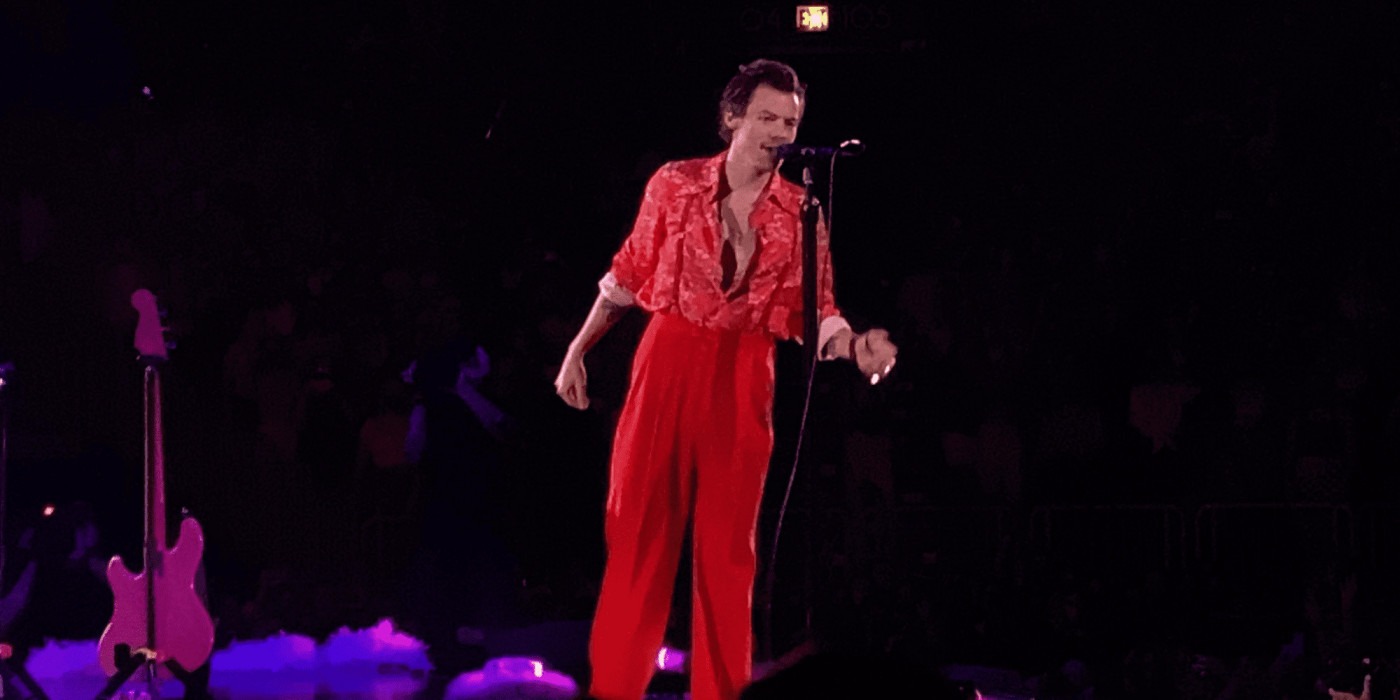Couture Culture: Harry Styles
“Bring back manly men.” That was conservative commentator, Candace Owens’, response to Harry Styles’ history-making Vogue cover, in which he donned a ball gown and custom Gucci jacket, becoming the first solo male cover star in the magazine’s 127-year history.
His cover was well-deserved: there is no denying that Styles’ has style – sparkly jumpsuits and retro tailoring are enough to convince anyone of this fact. But the conservative outrage that followed? Less so.
Rockstars destroyed the fashion rulebook for boring menswear and hailed in a new era of bold and adventurous fashion
After all, there is nothing particularly groundbreaking about Styles’ style. While his flamboyant choices, which blur the lines of costume and fashion, have made him pop culture’s darling and a style icon, they are seldom novel ideas, or unique to him. Instead, his choices are often inspired by the outrageous styles of those ‘manly’ men of the past. I am, of course, talking about rock stars.
Rock ‘n’ roll is culture’s playground: a place of subversion and invention. Not just home to musicians, but the natural habitat of anyone artistically inclined: tearing music away from fashion, art, and literature leaves a confusing history in its place.
It is no surprise then, that rock ‘n’ roll is the birthplace of several style icons. From the expressive David Bowie to punk Sid Vicious, rockstars destroyed the fashion rulebook for boring menswear and hailed in a new era of bold and adventurous fashion. Put simply, if a man’s outfit creates outrage, à la Styles’, then a rockstar probably wore something similar 40 years ago.
The man who dressed the 90s, Kurt Cobain, was unwitting and apathetic
Take Jimi Hendrix for example. When he strode into Bag O’ Nails in London, in 1966, dethroning Eric Clapton in a jam session, it was not only his guitar-playing that consolidated his status as a virtuoso. With a distinctly bohemian style, trademark military hussar jacket, velvet bell bottoms, and flamboyant fringes, Hendrix was equal parts intricate and unpredictable when it came to style. And with these hippie-ish inflexions, both from his guitar and his wardrobe, Hendrix injected a kaleidoscopic flair into men’s fashion, overwhelming the stiff and grey menswear of before, and unlocking new dimensions for men’s fashion.
At the same time, Jim Morrison, haunting poet and lead singer of The Doors, was helping to refashion leather’s role in menswear. While leather had been a fashion staple for some time, being associated with the adolescent rebellion of Greasers with their Moto jackets in the 50s, leather trousers promised a twist on the classic material. And with Jim Morrison adding his hedonistic yet romantic edge, alongside a dash of bohemia, leather was renovated as a truly edgy item in a man’s wardrobe.
But while most of rock’s fashion icons took some semblance of interest in their style, the man who dressed the 90s, Kurt Cobain, was unwitting and apathetic. With his faded, baggy jeans, oversized punk-band t-shirts, flannels, and cardigans, Cobain not only pioneered grunge as a music genre but as a fashion culture – whether he liked it or not. In a world of structured designs, Cobain introduced disorder and dishevelment, achieving an authentic, anti-establishment coolness that even had the establishment taking notes. When Marc Jacobs created his S/S 1993 collection for Perry Ellis, samples were sent to Cobain and Courtney Love, his wife and fellow grunge rockstar, as a tribute for having inspired the collection and altering fashion history. Their response? “We burned it”.
Jagger was not just one stylish step ahead of every other man, but entire miles
Talking of fashion history, any reference to both rock ‘n’ roll and style would simply be incomplete without talking about the modish and immodest Mick Jagger. With his breakout success with The Rolling Stones in 1965, following their hit ‘(I Can’t Get No) Satisfaction,’ Jagger has enjoyed his status as a charismatic and swaggering rock star for over six decades. Helping him to consolidate this status is his style. From chic mod suits, with pinstripe or dog-tooth patterns, to dresses, like the one he wore at the Stones’ Hyde Park performance in 1969, Jagger championed the avant-garde, showcasing an enviable grasp of the language of fashion.
And fashion certainly listened to what he had to say. While Hedi Slimane is often credited for revolutionising menswear, without Jagger’s early innovation, he might not have settled on his silhouette of skinny jeans, pointed boots, and sharp suits. Put simply, Jagger was not just one stylish step ahead of every other man, but entire miles.
So, when outrage arises about the fashion choices of Harry Styles, it seems a little… unreasonable. Flares with flair? Jimi Hendrix covered that one. Internet-crashing cardigans? Kurt Cobain was that trailblazer. And as for dresses, suits, and even sparkly jumpsuits? Well, Jagger got there first.

Comments